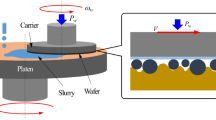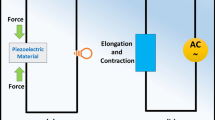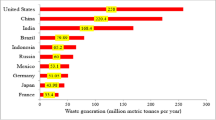Abstract
High purity polysilicon is the core raw material of solar cell, which is considered as environmental protection product. Due to the high energy consumption and environmental pollution in the course of its life cycle, the life cycle assessment (LCA) method is used to quantitatively calculate its environmental impact and summarize its emission reduction. Firstly, the LCA models of 1t industrial silicon and 1t high-purity polysilicon produced by modified Siemens process are established, and then the life cycle data of resource input, energy consumption, emission and comprehensive impact on the environment obtained from actual industrial production are analyzed. The main environmental impacts in its life cycle are divided into 1 ~ 10 impact categories to find the key factors that determine the environmental load. Results The LCA model was established and the environmental effects of the newly designed and modified Siemens process route on high purity polysilicon were compared. The environmental impacts of industrial silicon production and modified Siemens process for high-purity polysilicon production are 4.53 and 4.99, respectively. According to the quantitative results, the improvement focuses on reducing the power consumption of high-purity polysilicon in the production stage and optimizing the recycling of waste in the production process.
Similar content being viewed by others
Data Availability
All data generated or analysed during this study are included in this published article.
References
Valkila N, Saari A (2010) Urgent need for new approach to energy policy: The case of Finland. Renew Sustain Energy Rev 14:2068–2076. https://doi.org/10.1016/j.rser.2010.03.039
Zhang M, Zhou D, Zhou P (2014) A real option model for renewable energy policy evaluation with application to solar PV power generation in China. Renew Sustain Energy Rev. https://doi.org/10.1016/j.rser.2014.08.021
Moosavian SM, Rahim NA, Selvaraj J, Solangi KH (2013) Energy policy to promote photovoltaic generation. Renew Sustain Energy Rev 25:44–58. https://doi.org/10.1016/j.rser.2013.03.030
Cohan DS, Douglass C (2011) Potential emissions reductions from grandfathered coal power plants in the United States. Energy Policy.https://doi.org/10.1016/j.enpol.2011.06.039
Zhou K, Yang S, Shen C, Ding S, Sun C (2015) Energy conservation and emission reduction of China’s electric power industry. Renew Sustain Energy Rev 45:10–19. https://doi.org/10.1016/j.rser.2015.01.056
Jing T, Yu S (2015) Review on feasible recycling pathways and technologies of solar photovoltaic modules. Sol Energy Mater Sol Cells 141:108–124. https://doi.org/10.1016/j.solmat.2015.05.005
Xu X, Vignarooban K, Xu B, Hsu K, Kannan AM (2016) Prospects and problems of concentrating solar power technologies for power generation in the desert regions. Renew Sustain Energy Rev. https://doi.org/10.1016/j.rser.2015.09.015
Arriaga M, Canizares CA, Kazerani M (2017) Long-Term Renewable Energy Planning Model for Remote Communities. IEEE Trans on Sustain Energy 7:221–231. https://doi.org/10.1109/TSTE.2015.2483489
Hondo H, Baba K (2010) Socio-psychological impacts of the introduction of energy technologies: Change in environmental behavior of households with photovoltaic systems. Appl Energy 87:229–235. https://doi.org/10.1016/j.apenergy.2009.05.009
Li D, Lam T, Chan W, Mak A (2009) Energy and cost analysis of semi-transparent photovoltaic in office buildings. Appl Energy 86:722–729. https://doi.org/10.1016/j.apenergy.2008.08.009
Hosenuzzaman M, Rahim NA, Selvaraj J, Hasanuzzaman M, Malek A, Nahar A (2015) Global prospects, progress, policies, and environmental impact of solar photovoltaic power generation. Renew Sustain Energy Rev 41:284–297. https://doi.org/10.1016/j.rser.2014.08.046
Aglietti GS, Redi S, Tatnall AR, Markvart T (2009) Harnessing High-Altitude Solar Power. IEEE Trans Energy Convers Ec 24:442–451. https://doi.org/10.1109/TEC.2009.2016026
Hussein KH, Muta I, Hoshino T, Osakada M (1995) Maximum photovoltaic power tracking: an algorithm for rapidly changing atmospheric conditions. Generation, Transmission and Distribution, IEE Proceedings-.https://doi.org/10.1049/ip-gtd:19951577
Yue D, You F, Darling SB (2014) Domestic and overseas manufacturing scenarios of silicon-based photovoltaics: Life cycle energy and environmental comparative analysis. Sol Energy. https://doi.org/10.1016/j.solener.2014.04.008
Hsu DD, O’Donoughue P, Fthenakis V, Heath GA, Kim HC, Sawyer P, Choi JK, Turney DE (2012) Life Cycle Greenhouse Gas Emissions of Crystalline Silicon Photovoltaic Electricity Generation : Systematic Review and Harmonization. J Ind Ecol. https://doi.org/10.1111/j.1530-9290.2011.00439.x
Latunussa CEL, Ardente F, Blengini GA, Mancini L (2016) Life Cycle Assessment of an innovative recycling process for crystalline silicon photovoltaic panels. Solar Energy Materials & Solar Cells, 101–111.https://doi.org/10.1016/j.solmat.2016.03.020
Keoleian GA, Glantschnig WJ, Mccann W (1994) Life cycle design: AT&T demonstration project. IEEE Int Symp Electron Environ. https://doi.org/10.1109/isee.1994.337301
Brinkley A, Kirby JR, Wadehra IL, Besnainou J (1996) Life cycle inventory of PVC: manufacturing and fabrication processes. IEEE Int Symp Electron Environ. https://doi.org/10.1109/ISEE.1996.500405
Brinkley A, Kirby JR, Wadehra IL, Besnainou J, Coulon R, Goybet S (1995) Life cycle inventory of PVC: disposal options for a PVC monitor housing, IEEE Int Symposium on Electron Environ.https://doi.org/10.1109/ISEE.1995.514966
Touchton GL, Quentin GH, Mastrodonato B (1997) Lessons Learned From Durability Surveillance of Advanced Gas Turbines. Asme Turbo Asia Conference. https://doi.org/10.1115/97-aa-123
Grzesik K, Terefeńko T (2012) Life cycle assessment of an inkjet printer. Pol J Environ Stud 21:95–105
Pollock D, Coulon R (1996) Life cycle assessment: of an inkjet print cartridge, IEEE Int Symposium Electron Environ. https://doi.org/10.1109/isee.1996.501870
Huber W, Kolb G (1995) Life cycle analysis of silicon-based photovoltaic systems. Sol Energy 54:153–163. https://doi.org/10.1016/0038-092X(94)00121-S
Kato K, Murata A, Sakuta K (1997) An evaluation on the life cycle of photovoltaic energy system considering production energy of off-grade silicon. Sol Energy Mater Sol Cells 47:95–100. https://doi.org/10.1016/S0927-0248(97)00029-9
Ito M, Komoto K, Kurokawa K (2010) Life-cycle analyses of very-large scale PV systems using six types of PV modules. Curr Appl Phys 10:S271–S273. https://doi.org/10.1016/j.cap.2009.11.028
Ito MKKTK (2008) A comparative study on cost and life-cycle analysis for 100 MW very large-scale PV (VLS-PV) systems in deserts using m-Si, a-Si, CdTe, and CIS modules. Progress in photovoltaics 16. https://doi.org/10.1002/pip.770
Alsema EA (2000) Energy Payback Time and CO2Emissions of PV Systems-Chapter IV-2. 8, 17–25. https://doi.org/10.1002/(sici)1099-159x(200001/02)8:1<17::aid-pip295>3.0.co;2-c
Stoppato A (2008) Life cycle assessment of photovoltaic electricity generation. Energy 33:224–232. https://doi.org/10.1016/j.energy.2007.11.012
Fthenakis VM, Kim HC, Alsema E (2008) Emissions from photovoltaic life cycles. Environ Sci Technol 42:2168–2174. https://doi.org/10.1021/es071763q
Gerbinet S, Belboom S, Léonard A (2014) Life Cycle Analysis (LCA) of photovoltaic panels: A review. Renew Sustain Energy Rev 38:747–753. https://doi.org/10.1016/j.rser.2014.07.043
Alfred B, Katarzyna JL, Sylwia S, Tomasz T, Marek S, Aleksandra D (2021) Environmental performance of dye-sensitized solar cells based on natural dyes. Sol Energy 215:346–355. https://doi.org/10.1016/j.solener.2020.12.040
Koroneos C, Stylos N, Moussiopoulos N (2006) LCA of Multicrystalline Silicon Photovoltaic Systems. The International Journal of Life Cycle Assessment 11:183–188. https://doi.org/10.1065/lca2004.12.192.1
Soares WM, Athayde DD, Nunes EHM (2018) LCA study of photovoltaic systems based on different technologies. Int J Green Energy 15:577–583. https://doi.org/10.1080/15435075.2018.1510408
Ludin NA, Mustafa NI, Hanafiah MM, Ibrahim MA, Mohd AMT, Sepeai S, Zaharim A, Sopian K (2018) Prospects of life cycle assessment of renewable energy from solar photovoltaic technologies: A review. Renew Sustain Energy Rev 96.https://doi.org/10.1016/j.rser.2018.07.048
Li M, Dai Y, Ma W, Yang B, Chu Q (2017) Review of New Technology for Preparing Crystalline Silicon Solar Cell Materials by Metallurgical Method. IOP Conf Series Earth Environ Sci 94:012016. https://doi.org/10.1088/1755-1315/94/1/012016
Ansanelli G, Fiorentino G, Tammaro M, Zucaro A (2021) A Life Cycle Assessment of a recovery process from End-of-Life Photovoltaic Panels. Appl Energy 290(4):116727. https://doi.org/10.1016/j.apenergy.2021.116727
Takla M, Kamfjord NE, Tveit H, Kjelstrup S (2013) Energy and exergy analysis of the silicon production process. Energy 58:138–146. https://doi.org/10.1016/j.energy.2013.04.051
Jiang KZ, Chen ZZ, Ma WH, Cao SJ, Zhang HM, Zhu YQ (2021) Effect of Carbonaceous Reducers on Carbon Emission during Silicon Production in SAF of 8.5 MVA and 12.5 MVA. Silicon 14:7123–7133. https://doi.org/10.21203/rs.3.rs-813450/v1
Zhang HM, Chen ZJ, Ma WH, Cao SJ, Jiang KZ, Zhu YQ (2021) The Effect of Silica and Reducing Agent on the Contents of Impurities in Silicon Produced. Silicon 14:4925–4934. https://doi.org/10.21203/rs.3.rs-600648/v1
Braga A, Moreira SP, Zampieri PR, B Acc Hin J, Mei PR (2008) New processes for the production of solar-grade polycrystalline silicon: A review. Solar Energy Materials and Solar Cells 92, 418-424.https://doi.org/10.1016/j.solmat.2007.10.003
Yu Z, Ma W, Xie K, Lv G, Chen Z, Wu J, Yu J (2017) Life cycle assessment of grid-connected power generation from metallurgical route multi-crystalline silicon photovoltaic system in China. Appl Energy 185:68–81. https://doi.org/10.1016/j.apenergy.2016.10.051
Matsuno Y, Inaba A, Itsubo N, Yamamoto R (1998) Development of Life Cycle Impact Assessment Weighting Methodology for Japan -Weighting Methodology Based on the Distance-to-Target Method. J Japan Inst Energy 77:1139–1147. https://doi.org/10.3775/jie.77.1139
Cheng E, Li H, Ho D (2002) Analytic hierarchy process (AHP). Meas Bus Excell 6:33–37. https://doi.org/10.1108/13683040210451697
Acknowledgements
The authors are grateful for financial support from the National Natural Science Foundation of China (No. 51804147) and the Yunnan Province Department of Education (No. 2018JS018).
Funding
The authors are grateful for financial support from the Ten Thousand Talent Plans for Young Top-notch Talents of Yunnan Province (No. YNWR-QNBJ-2020–022) and the Major Projects of Yunnan Province (No. 202102AB080013) and the Key Science and Technology Specific Projects of Yunnan Province (N0. 202202AG050012).
Author information
Authors and Affiliations
Contributions
Kaizhi Jiang: Conceptualization, Resources, Writing - review & editing, Visualization, Validation, Supervision. Zhengjie Chen: Formal analysis, Validation, Data curation, Writing-original draft, Writing-review & editing. Wenhui Ma:Conceptualization, Methodology, Validation, Formal analysis, Investigation, Data curation.
Corresponding author
Ethics declarations
Ethics Approval and Consent to Participate
We don't cover ethics approval and consent to participate.
Consent for Publication
Not applicable.
Research Involving Human Participants and/or Animals
Not applicable.
Informed Consent
Not applicable.
Disclosure of Potential Conflicts of Interest
We declare that we have no conflict of interest.
Competing Interests
The authors declare no competing interests.
Additional information
Publisher's Note
Springer Nature remains neutral with regard to jurisdictional claims in published maps and institutional affiliations.
Rights and permissions
Springer Nature or its licensor (e.g. a society or other partner) holds exclusive rights to this article under a publishing agreement with the author(s) or other rightsholder(s); author self-archiving of the accepted manuscript version of this article is solely governed by the terms of such publishing agreement and applicable law.
About this article
Cite this article
Jiang, K., Chen, Z. & Ma, W. Research on LCA Data and Environmental Impact of Industrial Silicon Smelting and High Purity Crystal Silicon Purification. Silicon 16, 573–583 (2024). https://doi.org/10.1007/s12633-023-02698-8
Received:
Accepted:
Published:
Issue Date:
DOI: https://doi.org/10.1007/s12633-023-02698-8




